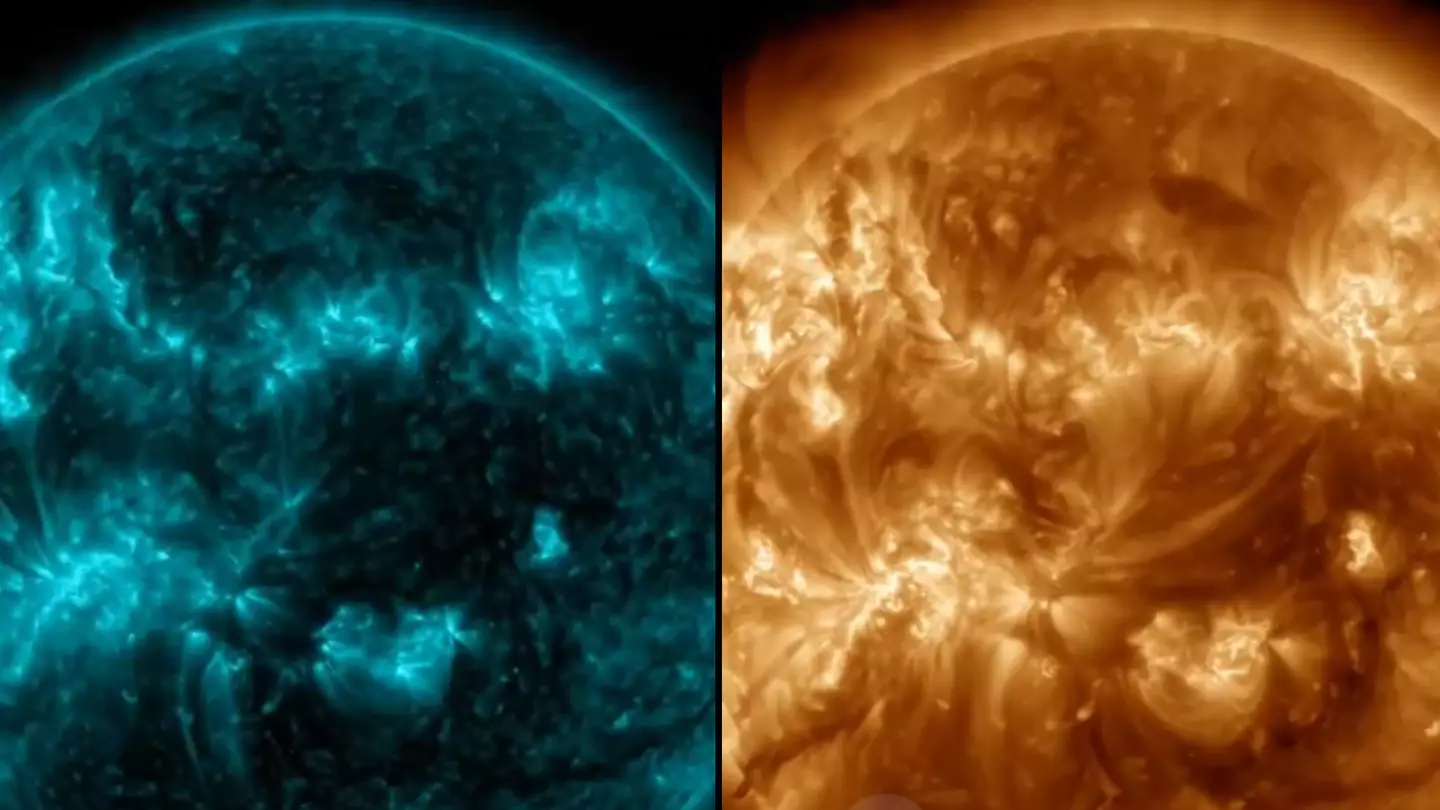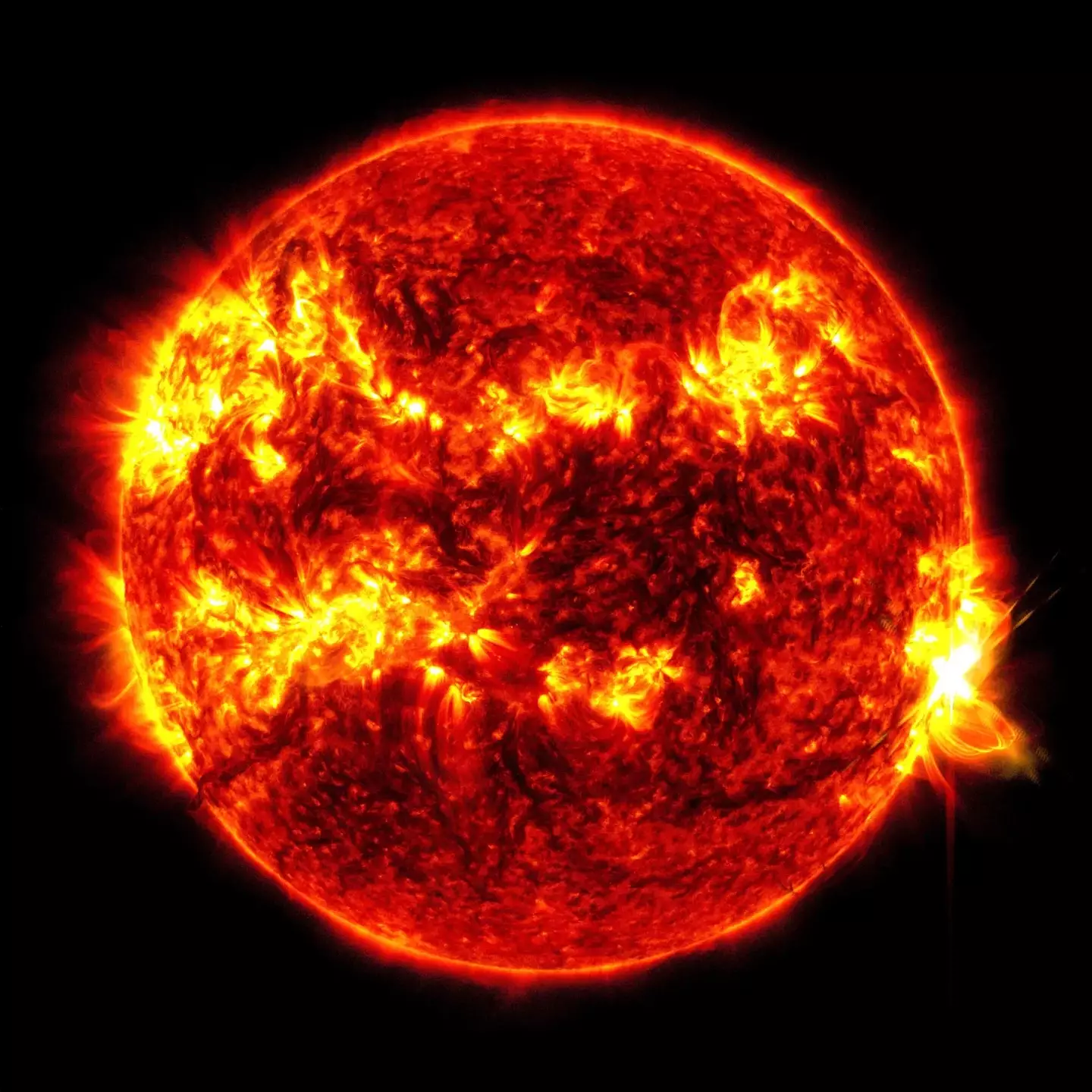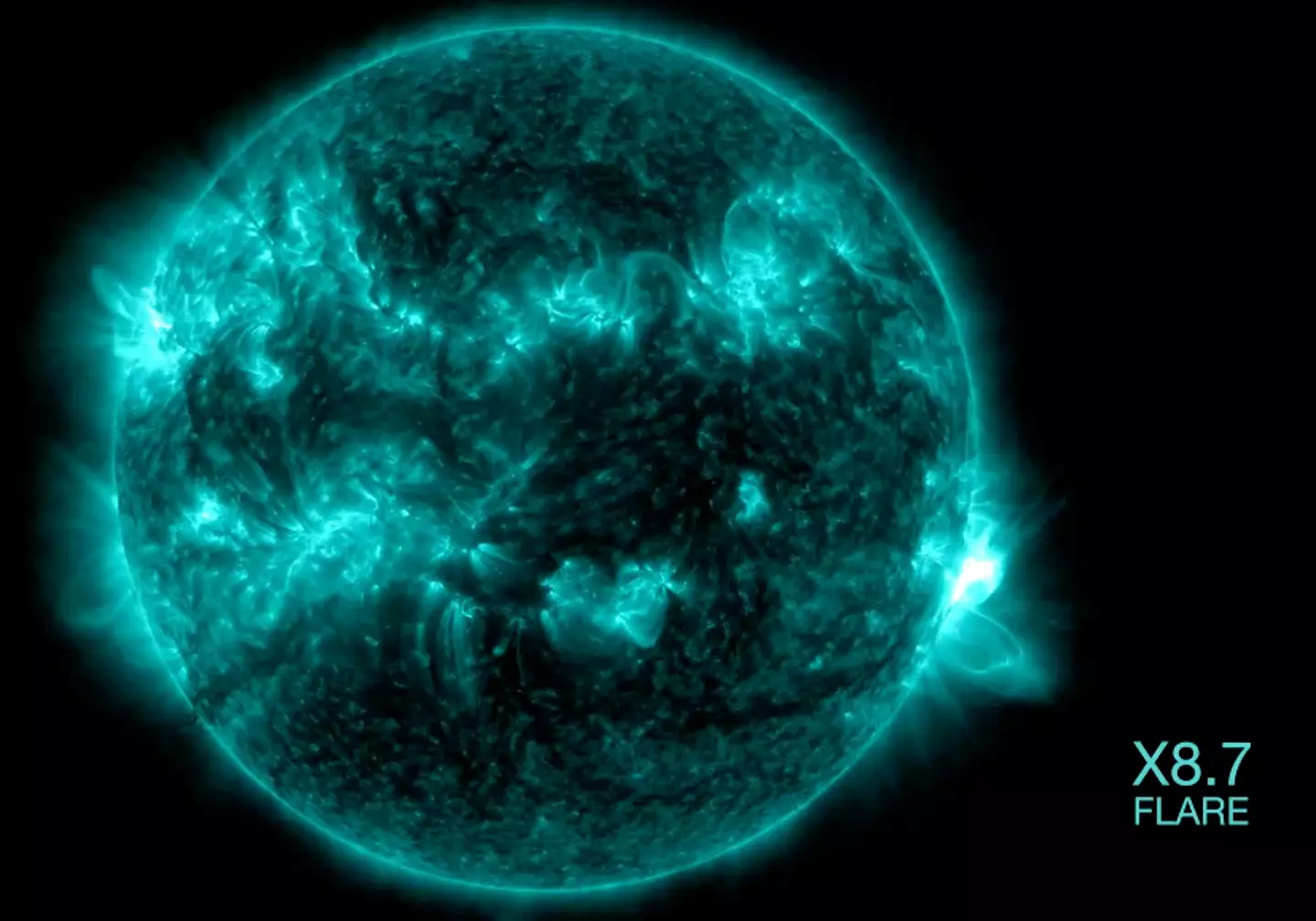
An incredible timelapse shows the Sun’s strongest solar flare in a decade.
Following on from last week’s ‘severe’ solar storm, National Oceanic and Atmospheric Administration (NOAA) revealed the Sun had emitted it yesterday (14 May)
As described by NASA, a solar flare is a powerful burst of energy.
Advert
Essentially, it’s a sudden eruption of brightness from its surface and when the Sun’s very active there will be several flares each day.

But this big one yesterday has been classified as an X8.7 flare, making it the biggest event in the Sun’s current 11-year solar cycle.
The X-class denotes ‘the most intense flares’ and then the number provides further information about its strength.
Advert
And incredible footage shared by NASA Sun and Space shows a ‘multi-wavelength look’ at the powerful burst of radiation yesterday.
While the solar flares see these ‘bursts of radiation’, the US space agency does add: “Harmful radiation from a flare cannot pass through Earth’s atmosphere to physically affect humans on the ground. However — when intense enough — they can disturb the atmosphere in the layer where GPS & communications signals travel.”
Flares and solar eruptions like this can have an impact on radio communications, electric power grids, navigation signals as well as posing risk to space crafts and astronauts.

And as well as all of that, solar flares can produce incredible light shows in the sky – auroras.
Advert
Of course, last week’s big solar activity had Brits flooding social media with photos as the Northern Lights were visible across the UK on Friday (10 May).
The ‘severe’ solar storm combined with the clear skies meant people across the country were spotting the incredible spectacle over the entire weekend.
However, as yesterday’s huge flare happened in a direction away from Earth, it’s unlikely we’d get to see the Northern Lights again because of it. I mean, once in a week is good enough for us.
Jim Wild, Professor of Space Physics at Lancaster University, told Metro: "Solar flares are unlikely to trigger displays of the Northern Lights.
Advert
"The aurora seen last weekend were caused by eruptions of solar material called coronal mass ejections impacting the Earth’s magnetic field.
"Flares and coronal mass ejections often happen at the same time, but yesterday’s flare didn’t launch any coronal mass ejections towards Earth."
Following yesterday’s whopper of a flare, the Sun also emitted a X2.9 flare at 3:38pm UK time today.
Featured Image Credit: X/@NASAGoddard